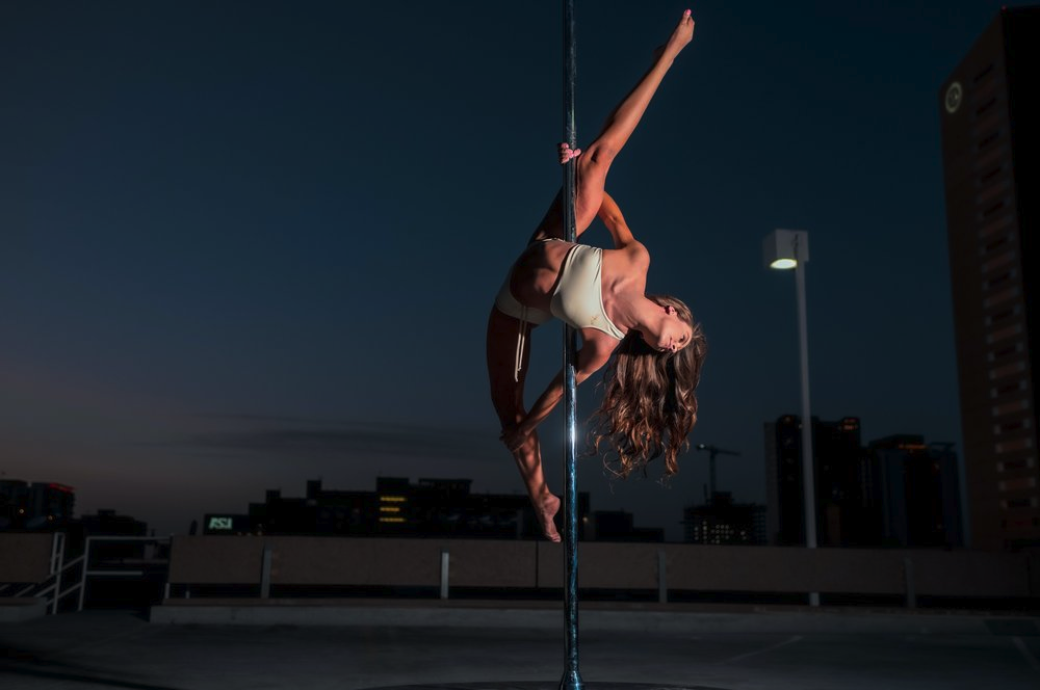What are Injury Rates like Among Pole Dancers?

Over the last few decades, recreational pole dancing has become more and more popular as a form of exercise for people of all ages, shapes, and sizes. Similar to other aerial arts, pole dance combines full body strength, flexibility, endurance and creativity while providing an incredible sense of community to its members. International and national competitions have been present since the early 2000’s and as of 2020 pole dance was officially recognized as a competitive sport by the Global Association of International Sports Federation (GAISF).
With the more mainstream popularity and recognition, we are finally beginning to see some research focusing on the realm of pole dance. Recently a study found that participating in an advanced level pole dance class for at least 30 minutes at a time for a minimum of 5 days a week (> 150 minutes total) can fulfill American College of Sports Medicine guidelines for cardio-respiratory fitness and health. Pretty cool, right?
In addition to findings supporting the health and wellness benefits of pole dancing, another recent study investigated the injury rates and factors associated with injury occurrence among pole dancers. This study, based in Poland, surveyed 320 female pole dancers and collected data regarding body composition, experience level, training habits, and injury/re-injury occurrences throughout their pole dancing career. The main findings are pretty eye opening:
- Over 86% of pole dancers reported sustaining an injury during their sport career
- Over 56% of pole dancers reported sustaining a re-injury. Of those who sustained a re-injury, 83% reported they did not fully recover.
- 84% of those sustaining an injury DID NOT seek out physical therapy. (ugh!)
- Pole dancers who trained more hours per week (4 or more) were more likely to sustain an injury.
- Pole dancers who were considered entry-level or beginner were more likely to sustain an injury compared to those of advanced or expert levels.
Does this mean that pole dancing a dangerous sport? Absolutely not. Simply put, it means that although pole dancing has become more mainstream, there has not been enough time put into research and education regarding injury risk reduction and optimal training strategies for pole dancers. The nature of pole dancing is very repetitive and very strenuous on the body. It has been found that more advanced dynamic pole maneuvers can generate an overload force equal to 2-3 G. If your body is not prepared to withstand that kind of force or, with less strenuous moves, that kind of repetition, there is a higher likelihood of sustaining an acute or overuse injury. So, what do we do now?
Educate! This is when working with a healthcare and fitness professional who deeply understands the nature of pole dance is essential. There is a need for creating injury-risk reduction strategies specific to pole dance and educating pole dancers on how to successfully manage and return from an injury. When injured, working with a physical therapist who can speak the language of pole dance and understand the unique physical and physiological demands of the sport will be crucial in your recovery. Imagine seeing a physical therapist while injured and they tell you everything looks “within normal limits” and don’t know how to help you get back to performing a Janeiro pain free? Or maybe they try to help you, but don’t understand the movements enough to give you exercises that help replicate the specific demands of pole dance.
What pole artists do with their bodies is not “within normal limits” so why should their physical therapy be limited to what is standard across the general population? (P.S. If you are a non-poler and are curious, just look up a Fonji, Eagle, or Rainbow Marchenko 😉) If you are a pole dancer who is pushing through pain, or unable to train right now due to injury, click here to schedule a free phone consultation with our performing and aerial arts specialist!
References:
- Nicholas, J. C. et al. Pole dancing for fitness: the physiological and metabolic demand of a 60-minute class. J. Strength Cond. Res. 33, 2704–2710 (2019).
- Szopa A, Domagalska-Szopa M, Urbańska A, Grygorowicz M. Factors associated with injury and re-injury occurrence in female pole dancers. Sci Rep. 2022;12(1):33.
- Ruscello, B. et al. Physical and physiological demands in women pole dance: a single case study. J. Sports Med. Phys. Fitness 57, 496–503 (2017).
Sign up for our newsletter
Join our community and receive exclusive physical therapy insights, training strategies, and recovery techniques tailored for active people.
